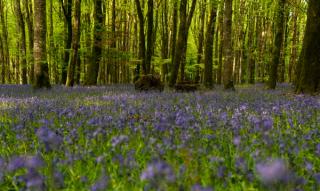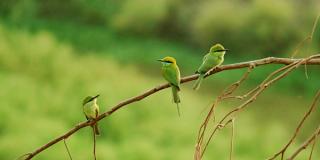
The connection between corporate biodiversity reporting and practical ecology
- Post Date
- 31 December 2024
- Read Time
- 4 minutes

The value chain of every company can be traced back to an interface with nature. At the bottom of every supply line is an agricultural, mineral or other nature-derived commodity. The global economy is entirely dependent on natural capital.
And nature is not faring well in this bargain. Typically, particularly in the post-industrial era, society’s take from nature has been detrimental, to such an extent that the stocks and services it provides are now becoming scarce, less dependable, less resilient and of poorer quality. This is bad for our natural world, but has consequential knock-on effects for supply chains, finance and people. As they say “there is no economy on a dead planet”.
To try and gain a clearer perspective on the problem, and the extent of this dependency, governments and regulators have introduced corporate nature reporting requirements (e.g. via TNFD, CSRD, GRI, EUDR, etc.); compulsory or voluntary frameworks for companies to consider and disclose their positions. TNFD – for example – aims to identify nature risk with the aim of diverting financial flows away from nature-harming activities towards nature-enhancing activities, and encompasses the whole value chain. Although currently voluntary, TNFD is expected to become mandatory in many countries globally over the next few years.
Large international and national corporations face a need to understand, measure and report their impact and dependence on natural capital.
Data for overview
The challenge is – while companies might be global – nature is local. Simply consider the wide diversity of nature and biodiversity in relation to location specific environmental variables - we can’t treat a desert the same as a coral reef.
In addition, there are limited resources to support nature restoration and mitigate nature related risks. Companies need to prioritise locations for protection and restoration and to do this requires a location-specific understanding of nature related risks and opportunities and location specific quantification of nature.
As it is not practical or affordable to measure the full diversity of nature everywhere, capturing data on key indicators that are highly correlated with wider biodiversity and ecosystem health is a robust alternative. For corporate reporting a very high-level screening of location-based risks is possible using low resolution tools like the WWF risk filter [1] and ENCORE tool [2]. For higher resolution, more site-specific assessment however, more granular data including field surveys are likely to provide more meaningful insights.
Companies are likely to need a number of metrics of nature, at a range of spatial scale in order to provide a comprehensive understanding of nature related risks, impacts and opportunities across their sites or portfolio. These data need to be “decision useful” and well aligned with reporting requirements such as TNFD.
Experts on the ground
It is at the more granular, field monitoring scale and at the point of designing restoration measures / projects to improve ecosystem health where the value of highly skill ecological and other technical experts such as hydrologists becomes critical. Location-based survey design and implementation, data analysis and interpretation, and target setting are key to achieving meaningful outcomes.
Technical specialists understand the effectiveness of different methodologies and the intricacies of individual species and ecological systems in depth, and can interpret ecological data more effectively. For example, they understand: that some insect trapping methods like pitfall traps are biased toward more mobile species and; what soil conditions are needed to support different habitats; and what plant species and habitats structure will support target species for example of birds and pollinators.
A potentially very successful model is for technical experts to train or supervise local people or staff in monitoring methods (for example setting insect traps at pre-determined locations, and to collect samples from them to send to a lab) both to bring down ecology field-costs and to increase engagement, knowledge sharing and income distribution via the nature reporting umbrella. In this context the technical experts can also provide a quality assurance role.
From understanding to action
Reporting on its own rarely delivers change. As companies seek to contribute to achieving the goals of the Global Biodiversity Framework they must start with reporting and end with action. Protection and restoration of specific sites will be a crucial part of maintaining and increasing the natural capital on which our supply chains depend. And this work is also site specific. Our supply chains start in a field, so our actions must too.
-------------------------------------------------
References:
[1] https://riskfilter.org/biodiversity/home
[2] https://encorenature.org/en
Recent posts
-

-

-

Understanding sound flanking: Fire alarm speaker cable conduits in multi-family buildings
by Neil Vyas
View post